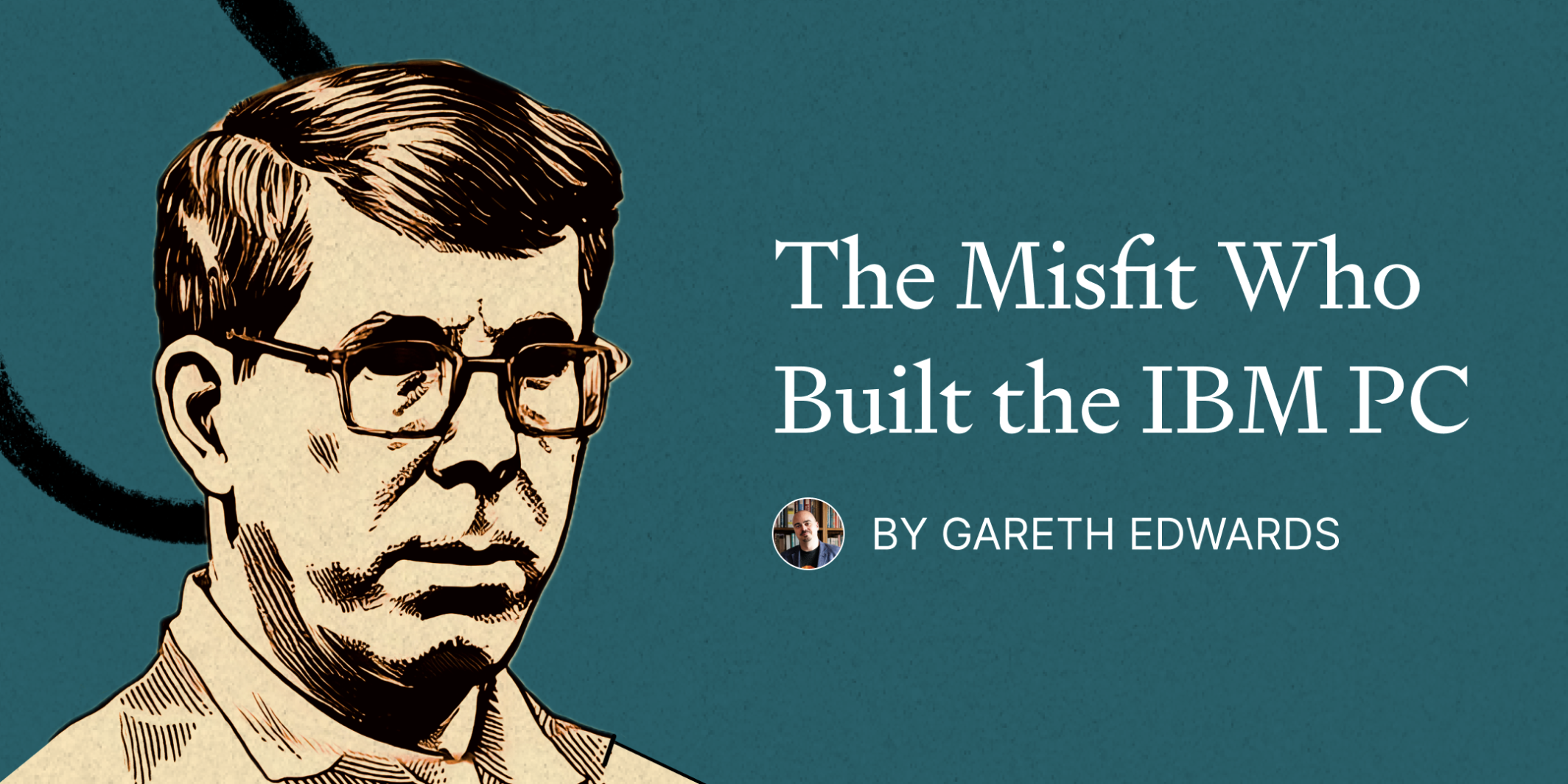The Misfit Who Built the IBM PC

🌈 Abstract
The article tells the story of Don Estridge, the man who brought the IBM PC to market and changed business and home computing forever. It covers how Estridge, a humble mid-level executive at IBM's Boca Raton facility, was tasked with turning a prototype microcomputer into a real product, despite resistance from IBM's senior management. Estridge assembled a team of misfits and outcasts within IBM and used his charismatic leadership style to navigate the company's bureaucracy, ultimately launching the IBM PC in 1981 which went on to dominate the personal computer market. The article also details the challenges Estridge and his team faced as the PC's success led to increased pressure from IBM's other divisions, eventually leading to Estridge's removal from the project. The article concludes with Estridge's tragic death in a plane crash in 1985.
🙋 Q&A
[01] Don Estridge and the IBM PC
1. What was Don Estridge's role in the development of the IBM PC?
- Estridge was a mid-level executive at IBM's Boca Raton facility who was tasked with turning a prototype microcomputer into a real product, despite resistance from IBM's senior management.
- He assembled a team of misfits and outcasts within IBM and used his charismatic leadership style to navigate the company's bureaucracy, ultimately launching the IBM PC in 1981.
- Under Estridge's leadership, the IBM PC went on to dominate the personal computer market.
2. How did Estridge's management style contribute to the success of the IBM PC project?
- Estridge provided senior management cover and political support to allow his team to operate outside of IBM's standard processes and procedures.
- He was able to quickly secure resources and talent from across IBM to support the project, despite resistance from other divisions.
- Estridge encouraged a collaborative, non-hierarchical work environment that inspired loyalty from his team.
- He balanced pushing his team hard with ensuring they maintained a healthy work-life balance.
3. What challenges did Estridge and his team face as the IBM PC became successful?
- As the PC's success grew, other IBM divisions became more interested in the project and wanted to exert more control over it.
- This led to increased bureaucracy, management layers, and a shift away from the nimble, innovative culture that had characterized the original PC team.
- Estridge struggled to maintain the team's autonomy and identity as the project was more tightly integrated into IBM's standard operations.
- The failure of the PC Junior project was a major blow that ultimately led to Estridge being sidelined by IBM management.
[02] The Aftermath of Estridge's Departure
1. What happened to IBM after Estridge was removed from the PC project?
- Without Estridge's leadership, IBM failed to keep pace with the rapid innovation happening in the PC market.
- The development of the PS/2, IBM's next-generation PC, proceeded at a slow pace and was already outdated by the time it launched.
- IBM's market share plummeted from 70% to 20% as clone manufacturers like Compaq were able to quickly bring more advanced PCs to market.
- IBM realized its mistake and sought to bring Estridge back to lead the PC business, but tragically he had died in a plane crash in 1985.
2. How did Estridge's team at Boca Raton react to his death?
- Estridge's death was deeply felt by the team he had assembled and led at Boca Raton.
- Over 1,000 people attended his funeral, many of them wearing the red rosette lapel pins that Estridge had given to recognize his core team.
- The team members placed the rosettes on Estridge's casket as a final tribute, unwilling to let him face the next world alone.
- Estridge's death marked the end of an era for the misfits and outcasts who had come together to build the iconic IBM PC.